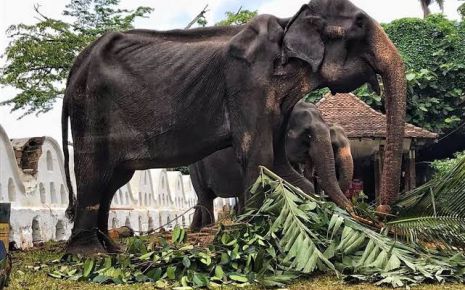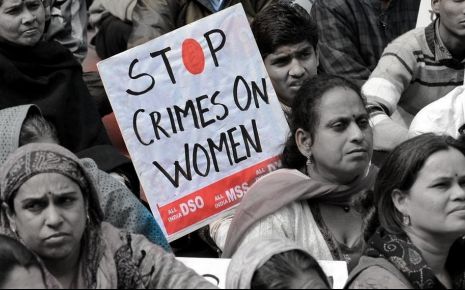Laws Relating To Broadcasting Of Sports In India
This article navigates the evolution of sports laws in India, spanning from
inception to the present. It unravels the interplay of legal facets and key
bodies that contribute to the seamless broadcasting of sports. It includes the
National Sports Policy (2001), the Sports Law and Welfare Association of India,
the Sports
Authority of India, and the sports broadcasting law. The conclusion highlights
pivotal landmark cases in the country's sports history.
Introduction:
Over the past twenty-five years, the Indian sports broadcasting landscape has undergone a remarkable transformation, emerging as one of the world's largest markets for sports coverage. This evolution is hardly surprising, given the widespread adoption of television, mobile devices, and internet technology across the Indian population.
As technological progress surged, so did the expansive reach of sports broadcasting. In an earlier era, Doordarshan stood as the singular broadcaster for sports in India. However, the landscape has undergone a remarkable transformation, marked not only by technological advancements but also by a significant surge in public interest in sports. This transformation underscores the pivotal role that broadcasting has played in shaping the contemporary sports scenario.
In the past, Doordarshan held a monopoly, charging a substantial Rs. 5 lakhs for each live telecast of cricket. Today, the scenario has evolved dramatically, with a multitude of broadcasters entering the fray, engaged in spirited competition with one another. This evolution not only reflects the changing dynamics of technology but also highlights the burgeoning passion for sports, turning broadcasting into a dynamic and competitive domain.
Together, these four pillars constitute a comprehensive regulatory framework that governs various facets of sports in India. By addressing legal, policy, developmental, and broadcasting aspects, this framework seeks to create a conducive environment for the growth, integrity, and success of sports in the country.
establish a strategic framework that would guide and enhance the sporting landscape of India.
Notably, the impact of the National Sports Policy extended beyond the realm of sports itself. The National Education Policy of 1986 incorporated the objectives of the National Sports Policy concerning the education sector. This integration emphasized the interconnectedness of sports and education, recognizing the pivotal role sports play in holistic development.
Crucially, the National Sports Policy, 1984, featured a forward-looking provision. It stipulated that a comprehensive review of its implementation would be conducted every five years. This periodic assessment aimed to evaluate the progress made and determine the efficacy of the policy's objectives. Such reviews were instrumental in shaping the subsequent course of action, allowing for necessary adjustments and refinements in response to evolving needs and challenges.
Therefore, the National Sports Policy, 1984, not only marked a commitment to enhancing the standards of sports but also demonstrated a dynamic and adaptive approach. The provision for regular reviews underscored a commitment to ongoing improvement, ensuring that the policy remained relevant and effective in fostering the development of sports in India.
SLAWIN operates as a platform that brings together legal experts and individuals immersed in the world of sports, facilitating an environment conducive to understanding, advancing, and ethically practicing sports law in the Indian context. This collaboration is essential for addressing legal challenges, ensuring fair play, and safeguarding the rights and interests of athletes and stakeholders in the sports industry.
Notably, SLAWIN has forged meaningful connections by establishing links and engaging in consultancy work with numerous organizations and partners. This strategic networking allows the association to contribute actively to the development and implementation of legal frameworks that govern sports. By leveraging these relationships, SLAWIN plays a crucial role in shaping policies, regulations, and practices that uphold the integrity, fairness, and welfare of the sports community in India.
In essence, SLAWIN goes beyond being a mere association; it is a dynamic force driving the intersection of law and sports, with a commitment to ethical practices and the overall advancement of the sports landscape in the country. Through its collaborative efforts and engagements, SLAWIN actively contributes to the evolution of sports law, ensuring its relevance and effectiveness in the ever-changing dynamics of the sporting domain.
SAI has been a pivotal force in shaping the trajectory of sports development in India. Its core function involves providing specialized training to elite athletes, contributing significantly to their skill enhancement and competitive readiness. Simultaneously, SAI has implemented a range of schemes aimed at identifying and nurturing young sporting talent, ensuring a continuous pipeline of skilled athletes for the nation.
These schemes are executed through a network of regional centres and training facilities strategically positioned across the country. This decentralized approach enables SAI to reach and tap into diverse talent pools, fostering a nationwide culture of sports excellence. Beyond athlete development, SAI extends its influence to academia by offering various academic programs in physical education and sports.
In essence, SAI plays a multifaceted role - from honing the skills of elite athletes to scouting and nurturing emerging talent, all while contributing significantly to the academic landscape of sports education in the country. This comprehensive approach underscores SAI's commitment to fostering a robust sports ecosystem in India and highlights its instrumental role in the holistic development of sports and games.
The Sports Broadcasting Law In India
In 2007, the enactment of the Sports Broadcasting Signals (Mandatory Sharing with Prasar Bharati) Act marked a significant legislative stride toward ensuring widespread accessibility to major national sporting events. The primary thrust of this legislation is to underscore the importance of free-to-air dissemination of sports broadcasting signals, mandating their sharing with Prasar Bharati. This strategic sharing is designed to facilitate broad audience reach, fostering inclusivity in the enjoyment of pivotal sports events that hold national significance. The Act comprehensively addresses various aspects and concerns associated with the compulsory sharing of these signals.
A key provision of the Act, found in Section 3(2), delineates the revenue-sharing mechanism between the content rights owner or holder and Prasar Bharati. For television coverage, the stipulated ratio is not less than 75:25, favouring the content rights owner, while for radio coverage, the ratio stands at 50:50. This provision establishes a fair and transparent framework for sharing the advertisement revenue generated through the broadcast of these sporting events. It ensures that content rights owners receive a substantial share of the revenue, providing an incentive for continued investment in high-quality sports content.
By striking a balance in revenue-sharing ratios and emphasizing free-to-air accessibility, the Sports Broadcasting Signals Act of 2007 aims to create a broadcasting landscape that maximizes public outreach and engagement during significant national sporting occasions. This legislative measure underscores the commitment to both inclusivity and fairness in the enjoyment of sports content with widespread national importance.
The Prasar Bharati Board consists of a Chairman, One Executive Member, One Member (Finance), One Member (Personnel), Six part time members, Director-General (Akashvani), Director-General (Doordarshan), One representative of the Union Ministry of Information and Broadcasting, to be nominated by that Ministry, Two representatives of the employees of the corporation.
Landmark cases that shaped sports law in India:
Conclusion:
The legal dynamics governing sports broadcasting in India encapsulate a dynamic interplay of technological advancements, commercial interests, and the imperative of preserving public access. The journey, spanning from Doordarshan's early monopolies to the widespread emergence of private broadcasters, signifies a continuous evolution that mirrors broader shifts in societal preferences and technological capabilities.
The existence of regulatory frameworks, exemplified by the Sports Broadcasting Signals (Mandatory Sharing with Prasar Bharati) Act, underscores the government's commitment to facilitating widespread access to significant sporting events. However, these regulations also navigate the nuanced challenge of striking a balance between fostering commercial viability and safeguarding public interest, particularly in shared resources like airwaves.
Entities such as the Sports Authority of India and the Sports Law & Welfare Association of India play pivotal roles in shaping the sports broadcasting industry. Their contributions extend beyond nurturing young talent to encompass advocacy for ethical practices, contributing significantly to the establishment and enforcement of legal norms governing sports.
Looking ahead, the future of sports broadcasting in India will demand continuous adaptation of the legal framework. The advent of emerging technologies, shifting viewer habits, and evolving business models will present new challenges requiring judicious regulation. The ongoing narrative of sports broadcasting law will revolve around finding the right equilibrium, balancing the promotion of a competitive industry with ensuring widespread accessibility. In this perpetually evolving landscape, legal frameworks will be instrumental in shaping the trajectory of sports broadcasting, safeguarding its vibrancy and inclusivity within India's cultural and entertainment tapestry.
Introduction:
Over the past twenty-five years, the Indian sports broadcasting landscape has undergone a remarkable transformation, emerging as one of the world's largest markets for sports coverage. This evolution is hardly surprising, given the widespread adoption of television, mobile devices, and internet technology across the Indian population.
As technological progress surged, so did the expansive reach of sports broadcasting. In an earlier era, Doordarshan stood as the singular broadcaster for sports in India. However, the landscape has undergone a remarkable transformation, marked not only by technological advancements but also by a significant surge in public interest in sports. This transformation underscores the pivotal role that broadcasting has played in shaping the contemporary sports scenario.
In the past, Doordarshan held a monopoly, charging a substantial Rs. 5 lakhs for each live telecast of cricket. Today, the scenario has evolved dramatically, with a multitude of broadcasters entering the fray, engaged in spirited competition with one another. This evolution not only reflects the changing dynamics of technology but also highlights the burgeoning passion for sports, turning broadcasting into a dynamic and competitive domain.
Laws Governing And Regulating Sports In India:
The regulation of sports in India is a multifaceted and comprehensive framework, primarily guided by four key pillars. These pillars collectively shape and govern the sporting landscape in the country, ensuring adherence to standards, promoting welfare, and fostering a conducive environment for both athletes and stakeholders. The major components contributing to this regulatory framework are, National Sports Policy, Sports Law and Welfare Association of India, Sports Authority of India and the Sports Broadcasting Law in India.Together, these four pillars constitute a comprehensive regulatory framework that governs various facets of sports in India. By addressing legal, policy, developmental, and broadcasting aspects, this framework seeks to create a conducive environment for the growth, integrity, and success of sports in the country.
National Sports Policy, 2001
In August 1984, a significant milestone was achieved with the presentation of a resolution on the National Sports Policy in both Houses of Parliament. The formulation of the National Sports Policy, 1984, was driven by the overarching goal of elevating the standard of sports throughout the country. It aimed toestablish a strategic framework that would guide and enhance the sporting landscape of India.
Notably, the impact of the National Sports Policy extended beyond the realm of sports itself. The National Education Policy of 1986 incorporated the objectives of the National Sports Policy concerning the education sector. This integration emphasized the interconnectedness of sports and education, recognizing the pivotal role sports play in holistic development.
Crucially, the National Sports Policy, 1984, featured a forward-looking provision. It stipulated that a comprehensive review of its implementation would be conducted every five years. This periodic assessment aimed to evaluate the progress made and determine the efficacy of the policy's objectives. Such reviews were instrumental in shaping the subsequent course of action, allowing for necessary adjustments and refinements in response to evolving needs and challenges.
Therefore, the National Sports Policy, 1984, not only marked a commitment to enhancing the standards of sports but also demonstrated a dynamic and adaptive approach. The provision for regular reviews underscored a commitment to ongoing improvement, ensuring that the policy remained relevant and effective in fostering the development of sports in India.
Sports Law And Welfare Association Of India
The Sports Law & Welfare Association of India (SLAWIN) stands as a non-profit, national professional organization with a shared objective focused on the comprehension, progression, and ethical application of "Sports Law" in India. Its primary mission is to contribute to the promotion of sports by fostering collaboration between legal practitioners and sports professionals.SLAWIN operates as a platform that brings together legal experts and individuals immersed in the world of sports, facilitating an environment conducive to understanding, advancing, and ethically practicing sports law in the Indian context. This collaboration is essential for addressing legal challenges, ensuring fair play, and safeguarding the rights and interests of athletes and stakeholders in the sports industry.
Notably, SLAWIN has forged meaningful connections by establishing links and engaging in consultancy work with numerous organizations and partners. This strategic networking allows the association to contribute actively to the development and implementation of legal frameworks that govern sports. By leveraging these relationships, SLAWIN plays a crucial role in shaping policies, regulations, and practices that uphold the integrity, fairness, and welfare of the sports community in India.
In essence, SLAWIN goes beyond being a mere association; it is a dynamic force driving the intersection of law and sports, with a commitment to ethical practices and the overall advancement of the sports landscape in the country. Through its collaborative efforts and engagements, SLAWIN actively contributes to the evolution of sports law, ensuring its relevance and effectiveness in the ever-changing dynamics of the sporting domain.
Sports Authority Of India
Established in 1984, the Sports Authority of India (SAI) emerged as an institution tasked with carrying forward the legacy of the IXth Asian Games, a prestigious event held in New Delhi in 1982. Operating under the Department of Sports, SAI was instituted as a Society registered under the Societies Act, 1860. This development was in alignment with the Resolution No. 1-1/83/SAI, dated 25th January 1984, issued by the Department of Sports, Government of India, outlining the explicit objective of promoting sports and games, as outlined in the resolution.SAI has been a pivotal force in shaping the trajectory of sports development in India. Its core function involves providing specialized training to elite athletes, contributing significantly to their skill enhancement and competitive readiness. Simultaneously, SAI has implemented a range of schemes aimed at identifying and nurturing young sporting talent, ensuring a continuous pipeline of skilled athletes for the nation.
These schemes are executed through a network of regional centres and training facilities strategically positioned across the country. This decentralized approach enables SAI to reach and tap into diverse talent pools, fostering a nationwide culture of sports excellence. Beyond athlete development, SAI extends its influence to academia by offering various academic programs in physical education and sports.
In essence, SAI plays a multifaceted role - from honing the skills of elite athletes to scouting and nurturing emerging talent, all while contributing significantly to the academic landscape of sports education in the country. This comprehensive approach underscores SAI's commitment to fostering a robust sports ecosystem in India and highlights its instrumental role in the holistic development of sports and games.
The Sports Broadcasting Law In India
In 2007, the enactment of the Sports Broadcasting Signals (Mandatory Sharing with Prasar Bharati) Act marked a significant legislative stride toward ensuring widespread accessibility to major national sporting events. The primary thrust of this legislation is to underscore the importance of free-to-air dissemination of sports broadcasting signals, mandating their sharing with Prasar Bharati. This strategic sharing is designed to facilitate broad audience reach, fostering inclusivity in the enjoyment of pivotal sports events that hold national significance. The Act comprehensively addresses various aspects and concerns associated with the compulsory sharing of these signals.
A key provision of the Act, found in Section 3(2), delineates the revenue-sharing mechanism between the content rights owner or holder and Prasar Bharati. For television coverage, the stipulated ratio is not less than 75:25, favouring the content rights owner, while for radio coverage, the ratio stands at 50:50. This provision establishes a fair and transparent framework for sharing the advertisement revenue generated through the broadcast of these sporting events. It ensures that content rights owners receive a substantial share of the revenue, providing an incentive for continued investment in high-quality sports content.
By striking a balance in revenue-sharing ratios and emphasizing free-to-air accessibility, the Sports Broadcasting Signals Act of 2007 aims to create a broadcasting landscape that maximizes public outreach and engagement during significant national sporting occasions. This legislative measure underscores the commitment to both inclusivity and fairness in the enjoyment of sports content with widespread national importance.
The Prasar Bharati Board consists of a Chairman, One Executive Member, One Member (Finance), One Member (Personnel), Six part time members, Director-General (Akashvani), Director-General (Doordarshan), One representative of the Union Ministry of Information and Broadcasting, to be nominated by that Ministry, Two representatives of the employees of the corporation.
Landmark cases that shaped sports law in India:
- Zee Telefilms & Ors. v. Union of India & Ors. This case is referred as the Magna Carta of the Indian Sports Law. Justice Sinha, among the minority of judges, expressed the viewpoint that the BCCI, in its function of recruiting players based on merit, bears a resemblance to a state-like entity. Consequently, it was argued that the BCCI should fall within the purview of the term "State" as defined in Article 12.
- The Secretary, Ministry of Information & Broadcasting v. Cricket Association of Bengal & Anr. Doordarshan initiated legal proceedings against the CAB, leading to a Supreme Court petition. The Court ruled that while the CAB had the right to engage in contractual agreements for selling broadcasting rights to private news channels.
Conclusion:
The legal dynamics governing sports broadcasting in India encapsulate a dynamic interplay of technological advancements, commercial interests, and the imperative of preserving public access. The journey, spanning from Doordarshan's early monopolies to the widespread emergence of private broadcasters, signifies a continuous evolution that mirrors broader shifts in societal preferences and technological capabilities.
The existence of regulatory frameworks, exemplified by the Sports Broadcasting Signals (Mandatory Sharing with Prasar Bharati) Act, underscores the government's commitment to facilitating widespread access to significant sporting events. However, these regulations also navigate the nuanced challenge of striking a balance between fostering commercial viability and safeguarding public interest, particularly in shared resources like airwaves.
Entities such as the Sports Authority of India and the Sports Law & Welfare Association of India play pivotal roles in shaping the sports broadcasting industry. Their contributions extend beyond nurturing young talent to encompass advocacy for ethical practices, contributing significantly to the establishment and enforcement of legal norms governing sports.
Looking ahead, the future of sports broadcasting in India will demand continuous adaptation of the legal framework. The advent of emerging technologies, shifting viewer habits, and evolving business models will present new challenges requiring judicious regulation. The ongoing narrative of sports broadcasting law will revolve around finding the right equilibrium, balancing the promotion of a competitive industry with ensuring widespread accessibility. In this perpetually evolving landscape, legal frameworks will be instrumental in shaping the trajectory of sports broadcasting, safeguarding its vibrancy and inclusivity within India's cultural and entertainment tapestry.
Law Article in India
Legal Question & Answers
Lawyers in India - Search By City
LawArticles
How To File For Mutual Divorce In Delhi

How To File For Mutual Divorce In Delhi Mutual Consent Divorce is the Simplest Way to Obtain a D...
Increased Age For Girls Marriage

It is hoped that the Prohibition of Child Marriage (Amendment) Bill, 2021, which intends to inc...
Facade of Social Media

One may very easily get absorbed in the lives of others as one scrolls through a Facebook news ...
Section 482 CrPc - Quashing Of FIR: Guid...

The Inherent power under Section 482 in The Code Of Criminal Procedure, 1973 (37th Chapter of t...
The Uniform Civil Code (UCC) in India: A...

The Uniform Civil Code (UCC) is a concept that proposes the unification of personal laws across...
Role Of Artificial Intelligence In Legal...

Artificial intelligence (AI) is revolutionizing various sectors of the economy, and the legal i...








Please Drop Your Comments